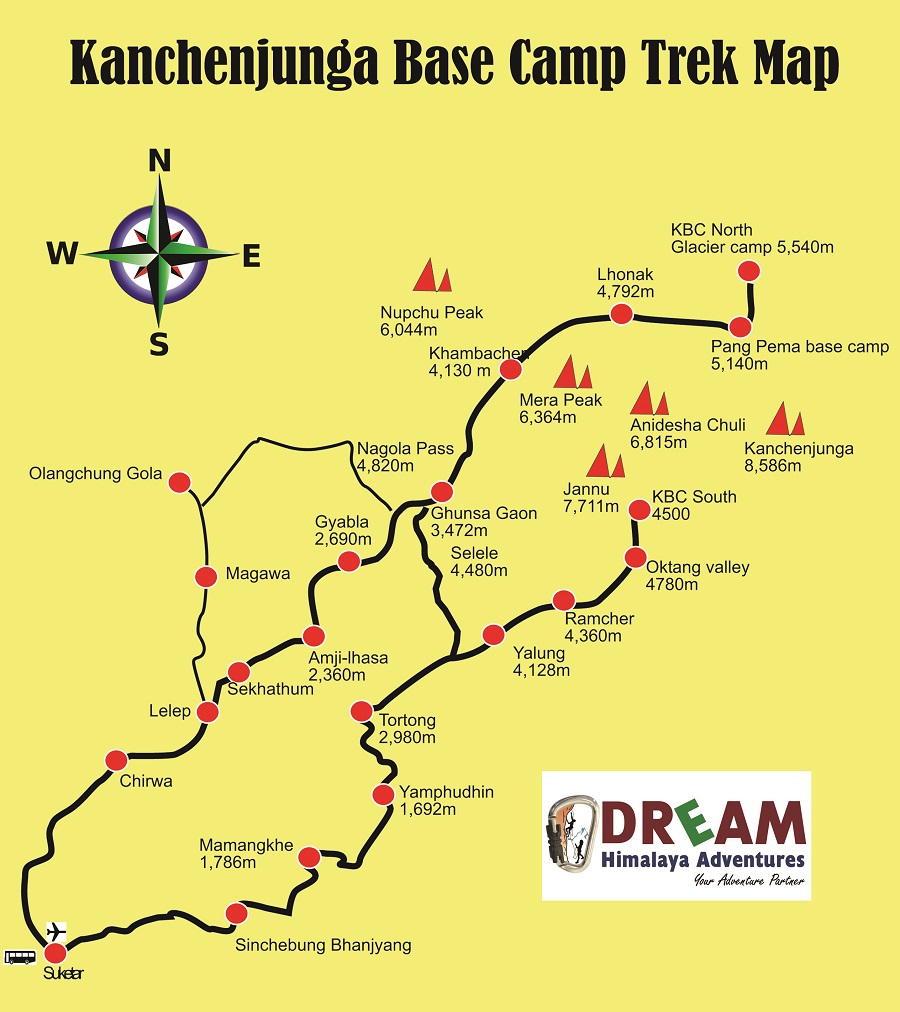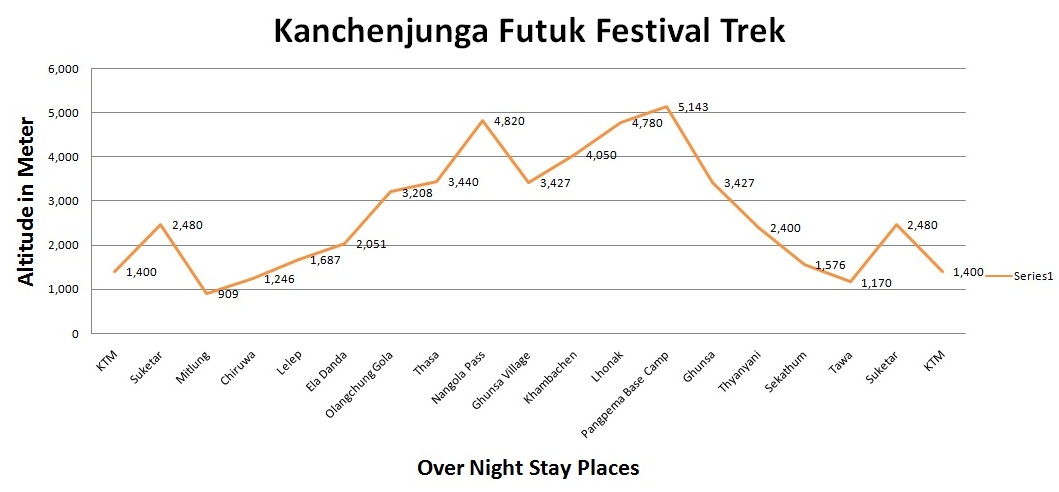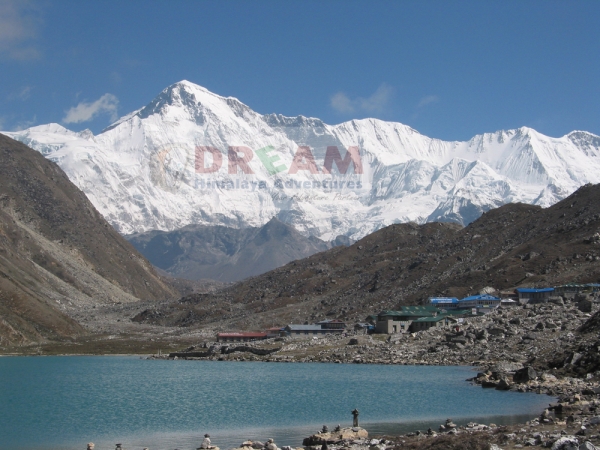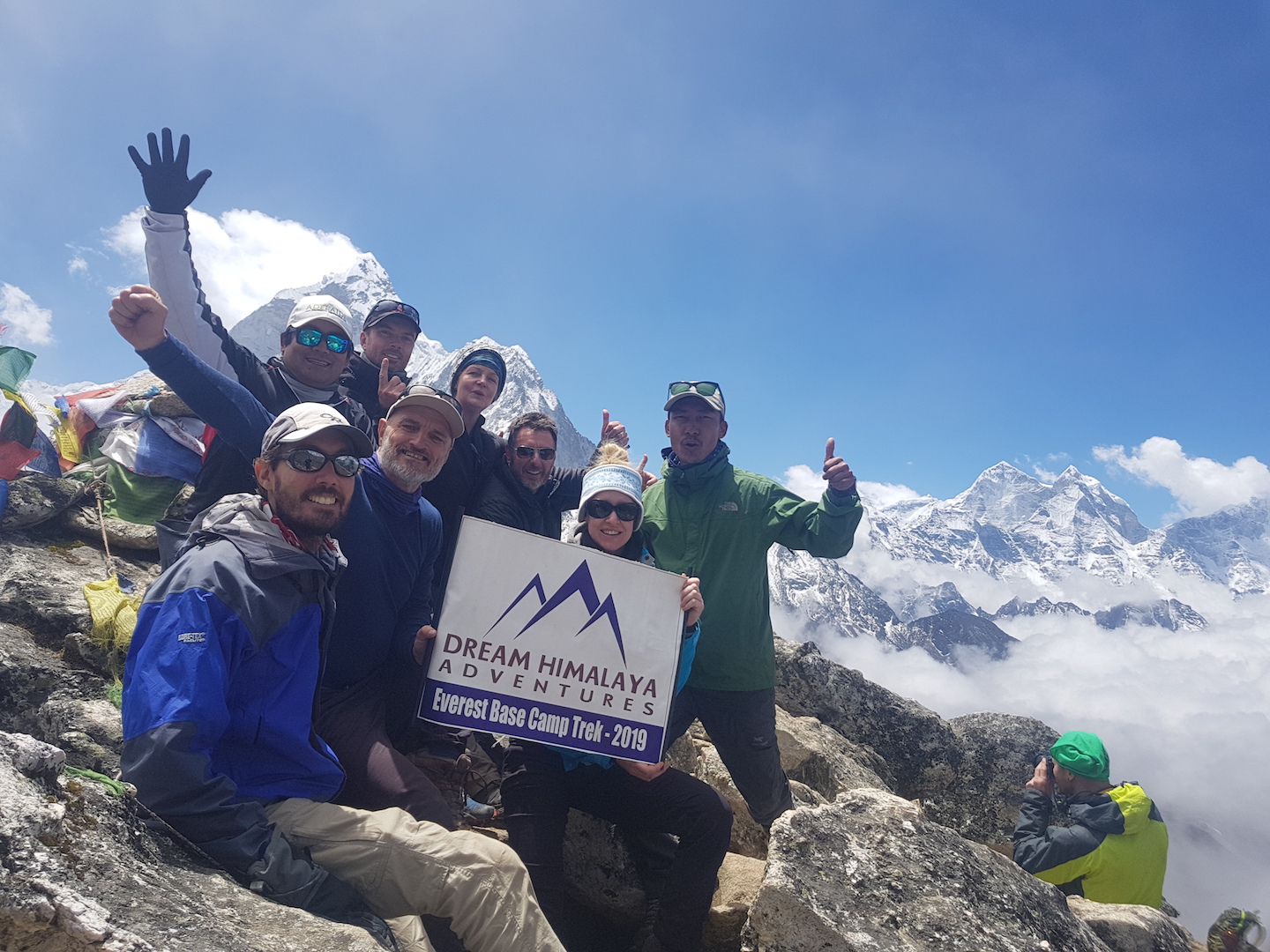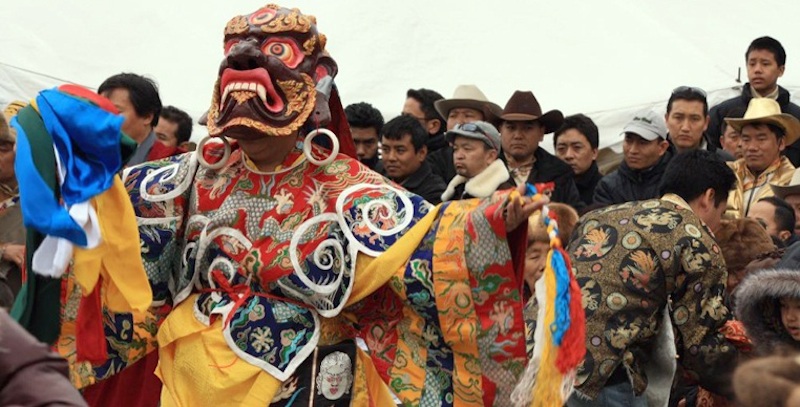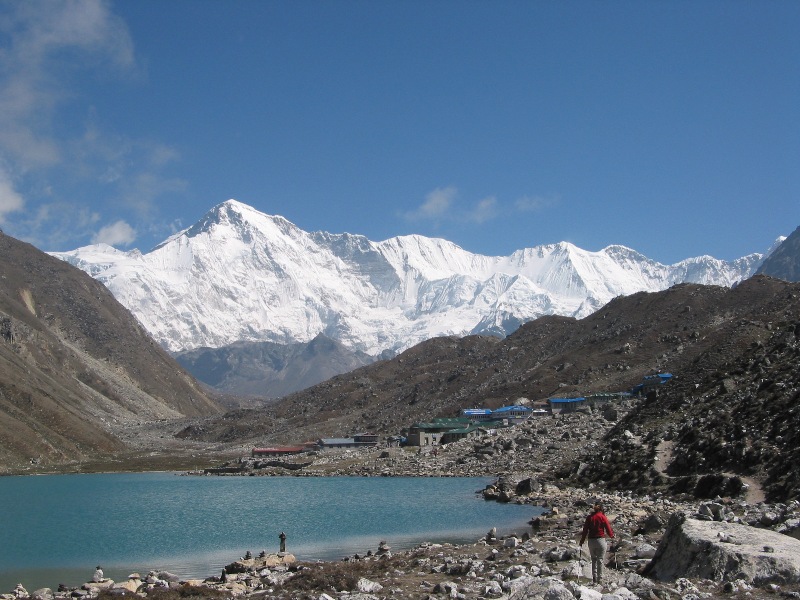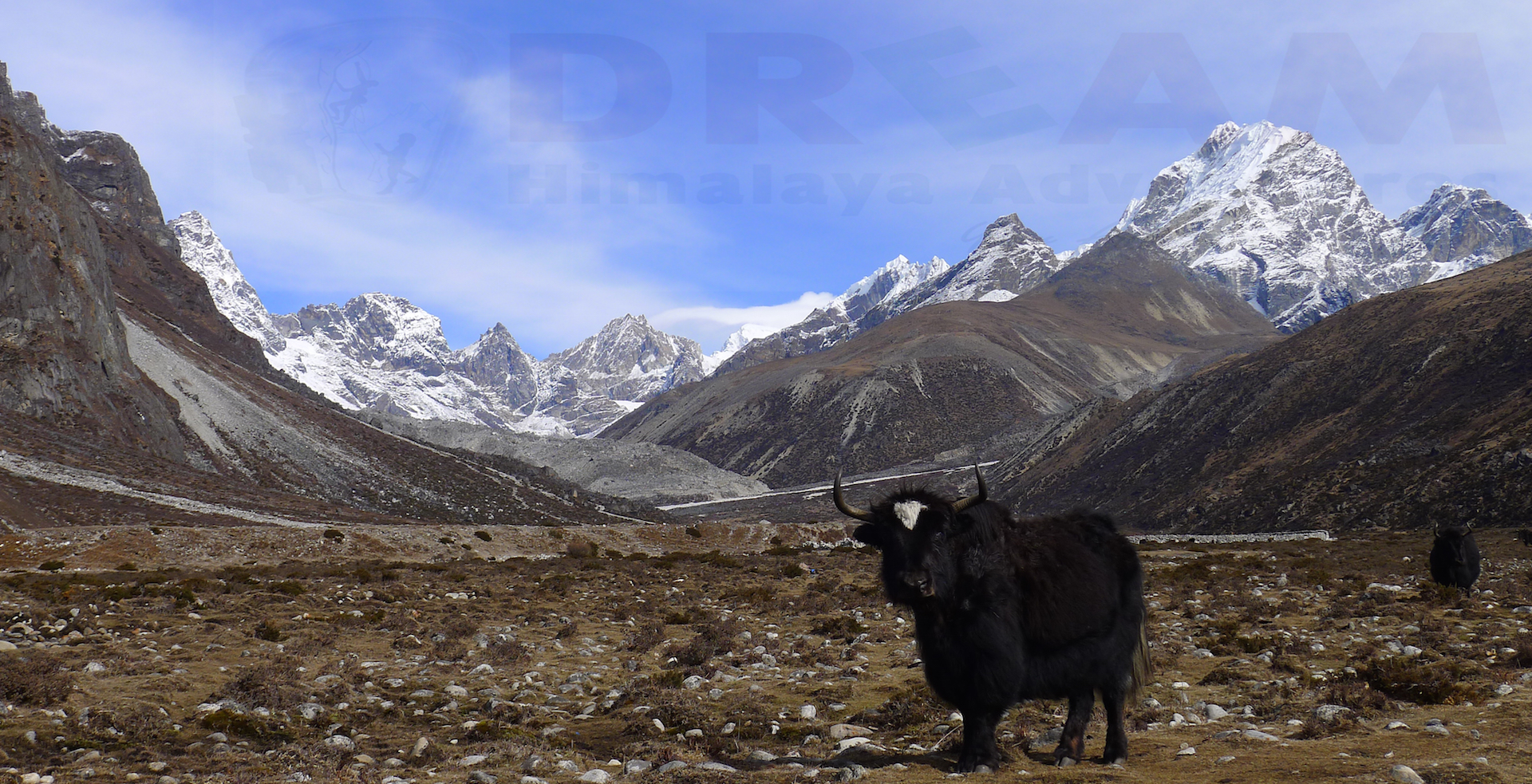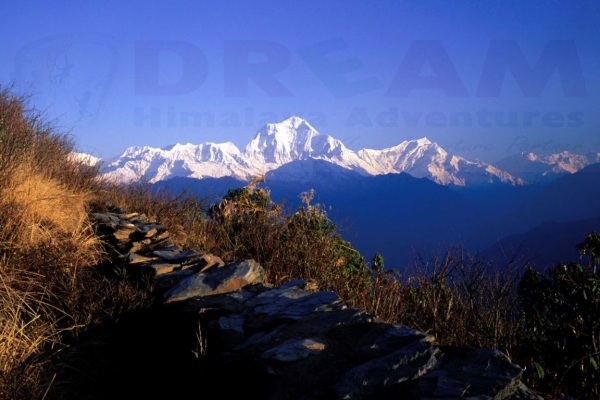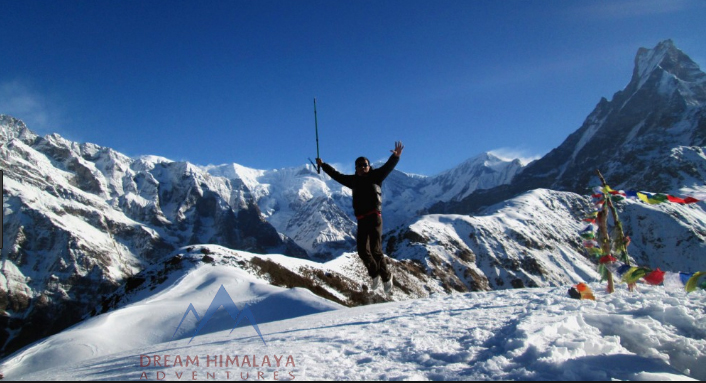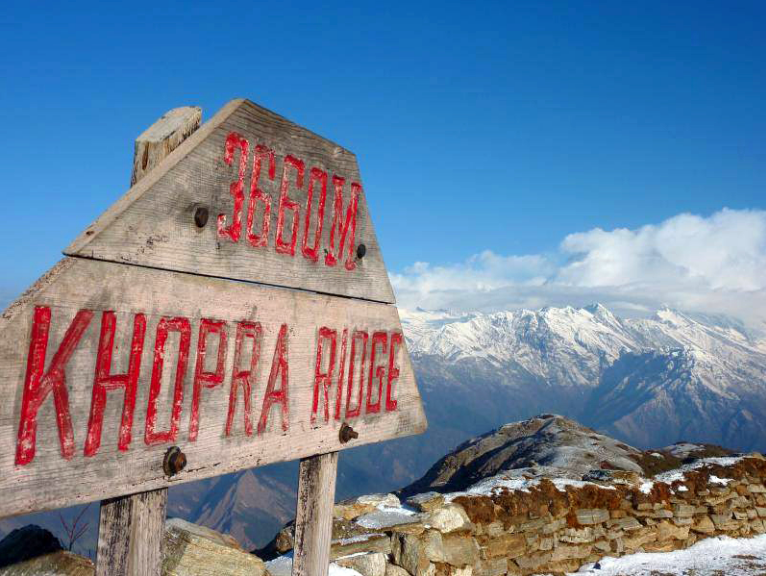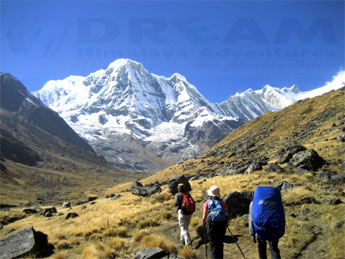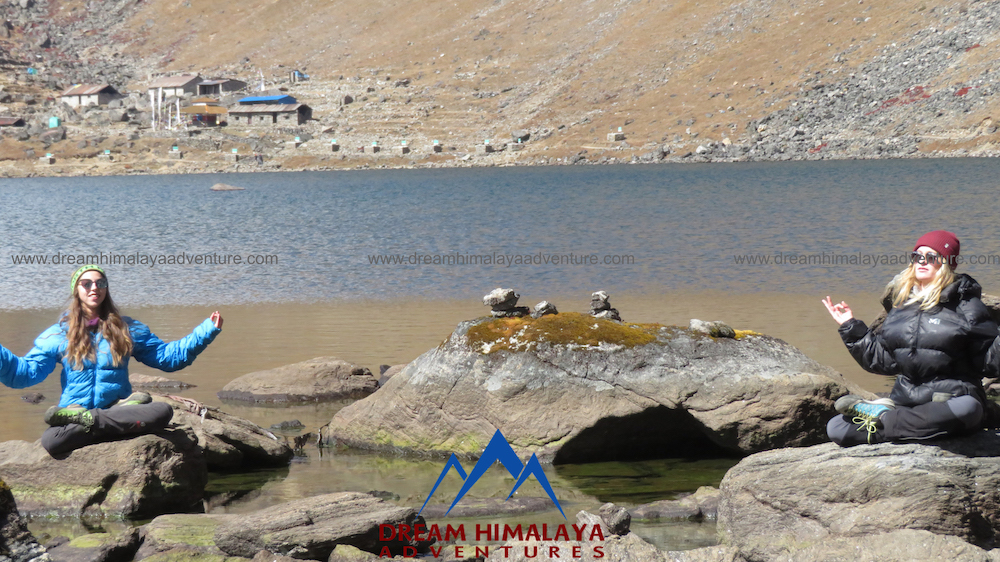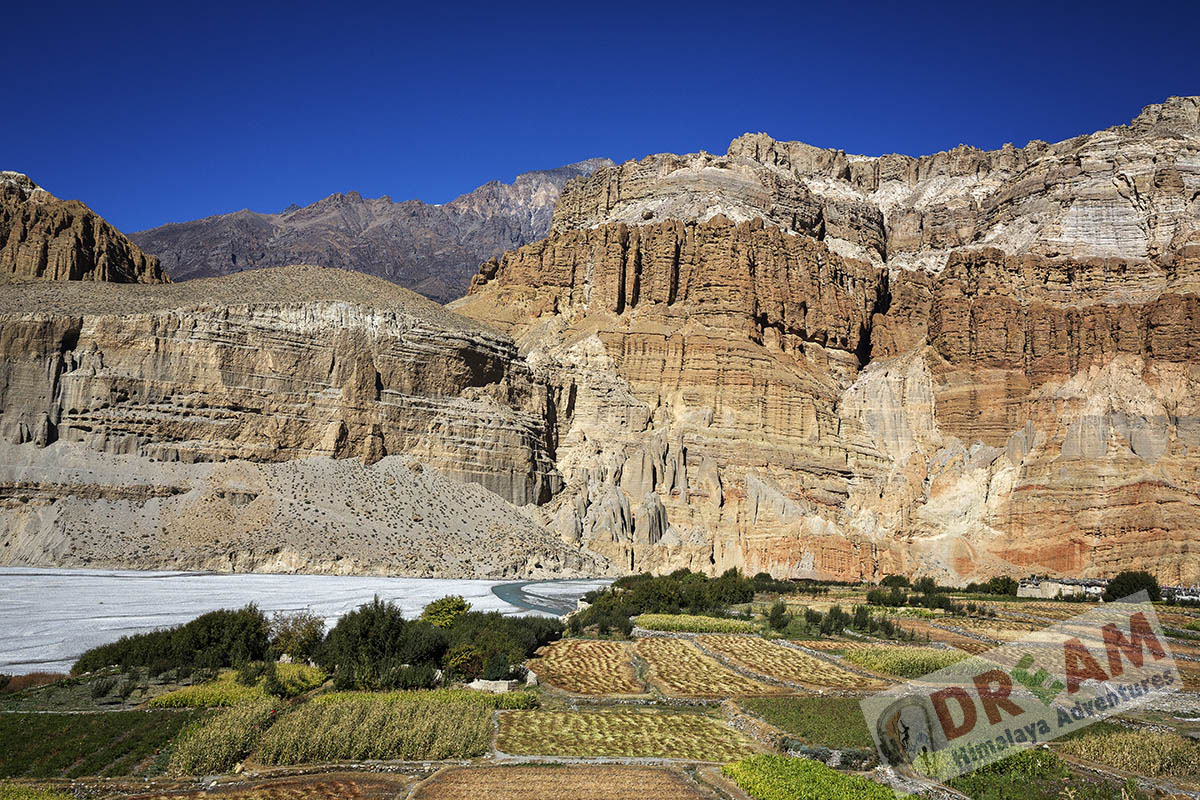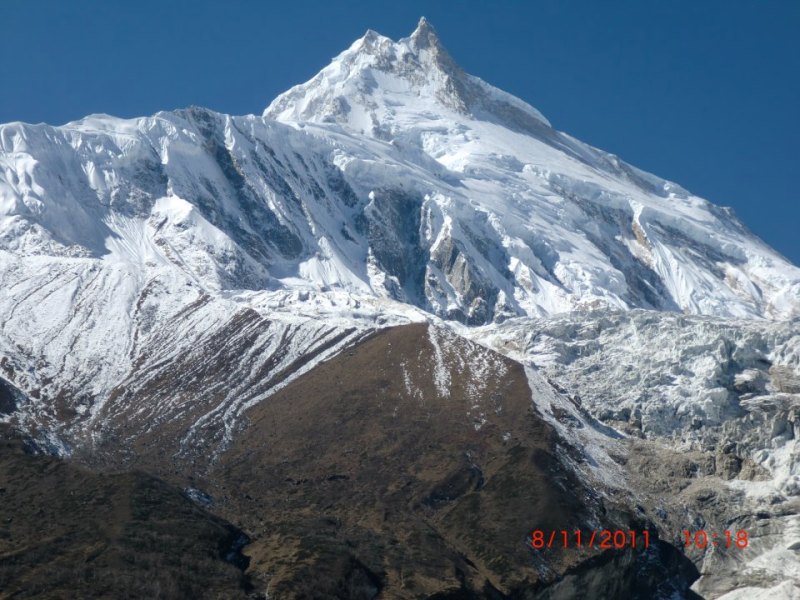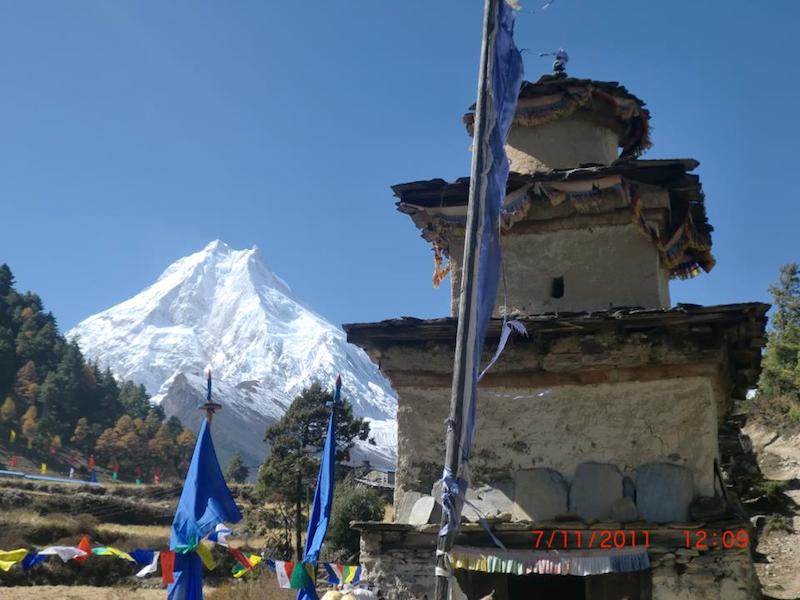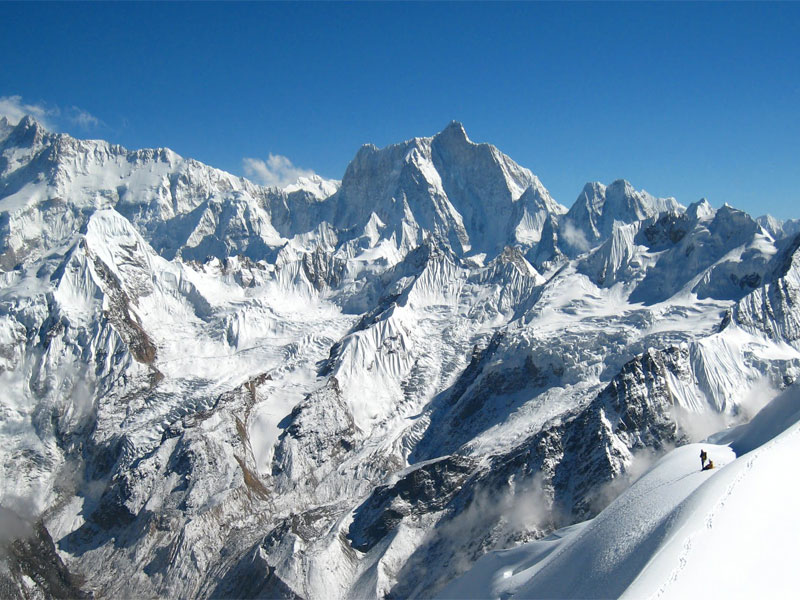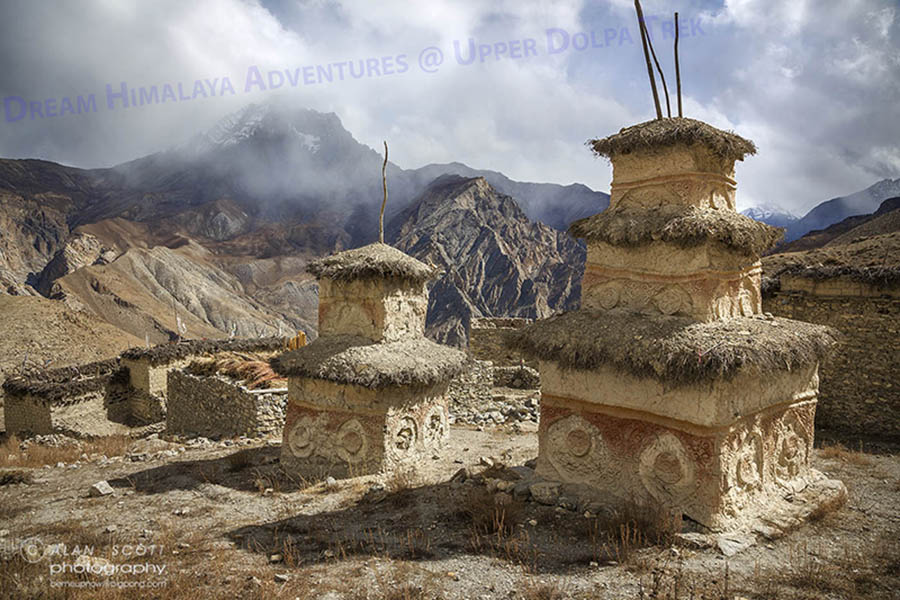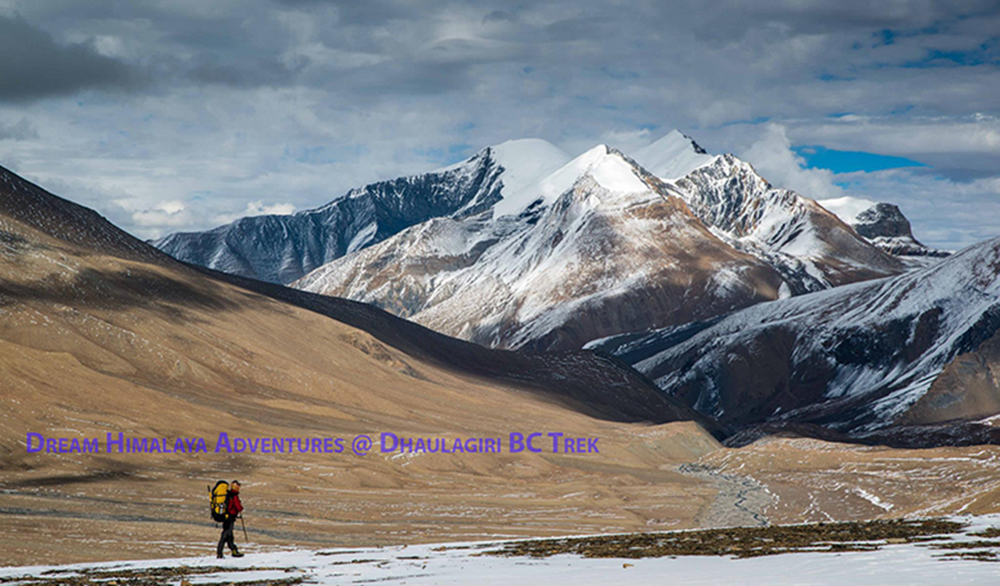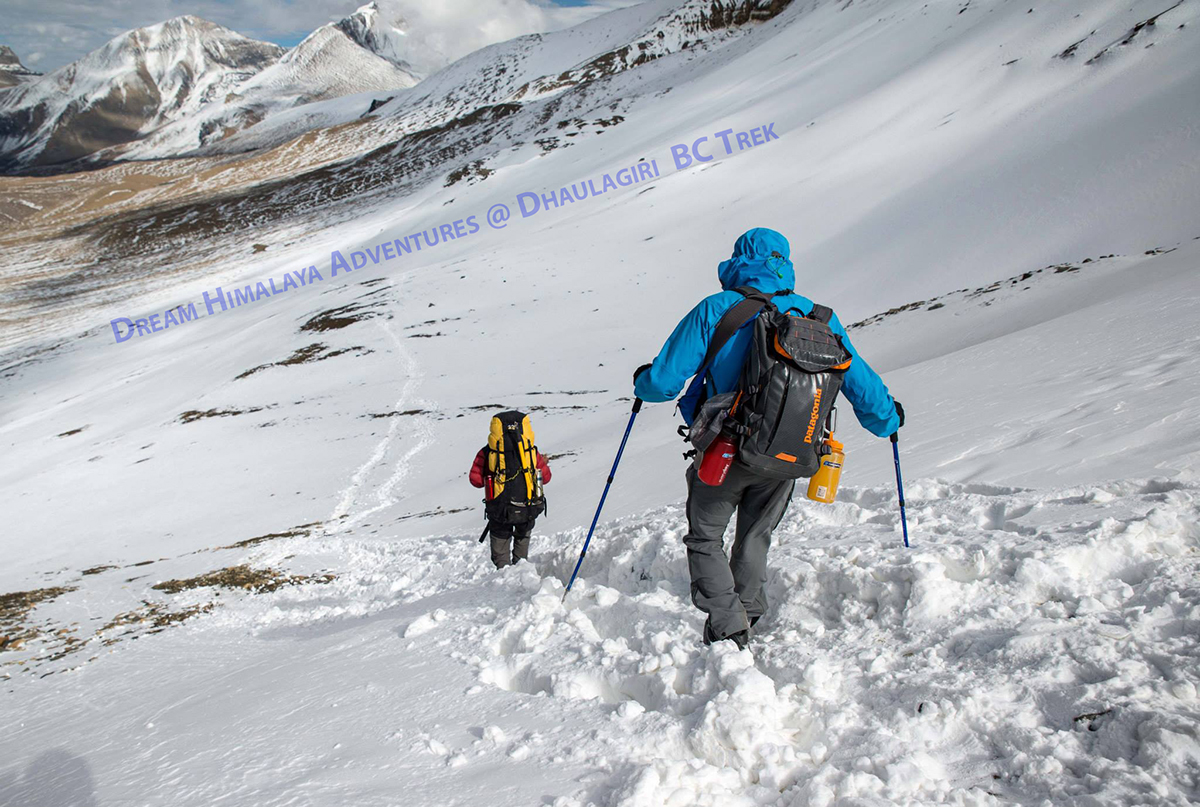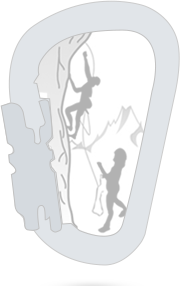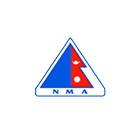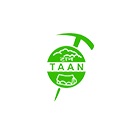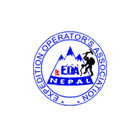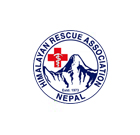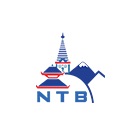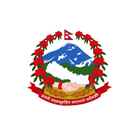Brief Introduction to Kanchenjunga Futuk Festival Trek
Mt. Kanchenjunga (28,198ft & treasures of the snow) is the third highest mountain in the world and was first climbed by the British in 1956. Lying on the Nepal – Sikkim borders, the lush landscape of the Kanchenjunga area is an ideal environment for musk deer, blue sheep, and the infamous Yeti. Few westerners have traveled to this remote area.
This region offers an endless variety of culture and changing countryside as it proceeds from terraced fields, forests of birch, bamboo, and rhododendron that eventually turn to stands of fir and hemlock as one climbs higher into the mountains. Himalayan bear, barking deer, and the lesser panda are among the rich animal and birdlife that fill the area. Kanchanjunga, Makalu and the spectacular Jannu are among the peaks at the outset of the trek. Passing through villages of Brahmins and Chhetries, you enter an almost exclusive Limbu territory with a scatter of Gurung and Sherpa settlements.
The trek runs through Kanchenjunga Conservation Area(KCA) in the eastern Himalaya. Trekkers can explore traditional farming practices and see different birds and wildlife species. There are a number of high mountain lakes in Olangchung Gola. Through this route, we explore two of Nepal’s best-preserved protected areas – the Kanchanjunga Conservation Area. Through the route, one can also trek to the base camps of Mt Kanchanjunga. Similarly, the Tamor river can be the other attraction for tourists. The route encompasses alpine grasslands, rocky outcrops, dense temperate and sub-tropical forests, and low river valleys. Apart from natural beauty, trekkers can also explore the cultural heritage like monasteries, chhortens, temples and prayer walls. And to add to the flavor, the festivals of all of these people living in harmony only serve to make the native culture livelier.
The trek to Kanchenjunga is a long course and offers one of the best high altitude trekking trips, leading the famous peaks of eastern Nepal as Kanchenjunga and mysterious Jannu via the enormous Yalung Glacier. It also allows a trip to Lamsang La and Kanchenjunga glacier. The view of Kanchenjunga range and Kanchenjunga (8,556m) the third highest in the world, from the north base camp is simply breathtaking and unforgettable, as is the north face of Jannu, a worthy destination itself. The trail goes from the Sub Tropical lowlands up to the Yalung Glacier 5000m; enable the trekkers to experience a diverse cross-section of topography, people, culture, fauna, and flora. Set in a remote wilderness, inhabited by a few nomadic yak herders, this region has much to offer the adventurous trekkers who are looking for something different.
Olangchung Gola & It’s traditional cultures
Olangchungola is locally known as Walung, Their religion, language, dress and social patterns are Tibetan in derivation. The Futuk festival, during the Futuk festival, masked dancers enact various scenes, including a scene depicting a battle between the local Maksum Gyabo and the Gyabo of the neighboring Thudam area. Walungs celebrate with great fervor the social and religious festivals of Lhosar, Neso, Futuk, Sakadawa, Dhukpachhesi, and Ngyungnay. While the Walung themselves call it Holung or Walung. Gola means a market. As those living in Walung are slightly different as a group from the inhabitants of the adjoining areas of Nepal and Tibet, they have been regarded as a separate indigenous people. Among these villages, the largest settlement is Olangchung Gola itself. The language and script of Walungs like the other inhabitants of the northern region resemble those of the Tibetans, and the Tibetan language and script are prevalent among the Walungs. The birth, death, marriage and other ceremonies of Walungs are similar to the indigenous peoples living around them. The ceremonies following death like the lama reading sacred text over the dead body for three days, beautifying the body, cremating (burning) it and other related customs of Walungs are similar to those of other indigenous peoples of the Himalayas. The dress and food habits of Walung are similar to those of the Sherpas.
The Walungs traditionally had a local administrative post of Gobha to look into the various local administrative affairs of society, the practice of having the post of Gobha began two hundred years ago but the post of Gobha is no longer found today. The Walung follows the old Buddhist religion. They worship the Avalokiteshwara, who is known as Cherisi. The Walung also revere Padmasambhava. Along with a 90-ft tall monastery, there are many monasteries in the villages.
Journey Outline
The first-day trek starts from Fungling (1777m) – the headquarters of Taplejung district. Sherpa Tol is the gateway to this trek. The trek passes through beautiful cardamom fields and Alnus trees (Uttis) until Hangdewa VDC, which takes around two and a half hours. Along the way, there are small teashops that can be used for alternative accommodation as they provide homestay facilities. After about 3 hours of walk, we reach Mitlung at the bank of Tamor river. Next three days, the trek passes along the banks of Tamor River up to the Lelep village passing through mostly the Limbu villages i.e. Shiwa, Chirwa, Hellok & Tapethok but peoples living in Lelep village and above are mostly the Sherpas. From Pembu, it is an uphill climb for about two and a half hours to Lelep (1687m) – our destination for the 3rd day. The KCAP headquarters is in Lelep. Similarly, there is a police station, some teashops, groceries, and hotels. There are also some good camping sites in Lelep.
Day 4th, the trek runs along the bank of Tamor River through dense forest that offers good habitat for different wildlife species. You can see some wild species if you are lucky. After crossing a suspension bridge, and a monastery and gradually descends after about half an hour and we reach Gowatar (1800m). Near the village, there is a big stone and it is believed that only the religious people can move them. After a walk of around half hours, that offers spectacular views of two waterfalls about 100 meters tall. Another 1-hour walk will take us to our camping site at Ela Danda (2051m). The place offers a panoramic view of snow-capped peaks including the Small Kasturi Peak and Tamor River. Trek to Olangchung Gola (3,208m), is the 2nd longest day 7–8 hours walk passes through Ulnus and Rhododendron forest. The trek passes through dense bamboo groves (spread over around 5 hectares). This place is popular among trekkers as the habitat of the Red panda. If you are lucky, we might catch a sight of red panda from the trail itself. After a total walk of three and a half hours from El Danda, we reach Maguwa (2435m) probably for the pack quick Lunch. About walking of 3 and a half hours, we caught the first glimpse of Olangchung Gola, After a climb of about 40 minutes, we finally reach at Olangchung Gola (3208m). Olangchung Gola is a beautiful Sherpa village with around 45 houses, a 465 years old monastery with golden manuscript and KCAP office. There is also a sub-health post, a primary school and a border police station at Olangchung Gola. Here we take an extra day for the exploration of the local town and probably the oldest Buddhist monastery in Nepal.
Now our trek turns towards the Mt. Kanchenjung base camp, The next day we stay overnight at an all most NO houses village called “Thasa” and crossing the Nangola Pass (4,776m), we finally get into the Ghunsa valley area. Ghunsa is a most beautiful Sherpa village with around 30 houses, an old Buddhist monastery and again KCAP office. There is also a sub-health post, a primary school. There are few nice guest houses accommodation with hot shower etc. Peoples are friendlier with the tourist. After spending an extra day at Ghunsa, now we proceed towards to the Mt. Kanchenjung base camp, passing through the small Sherpas villages Khambachen and Lhonak, we finally catch up the awesome and unbelievable views of several mountains i.e. Mt. Kanchenjunga (8,586m), Mt. Jannu (7,771m), Ramtang peak (5700m), and more other peaks. NOW, we take retrace back to Ghunsa, trek to another Sherpa village with few teahouses Amjilosa. Another two long trek days to Chirwa and Taplejung.
TRIP HIGHTLIGHTS
- Stunning views of other several snow capped mountains
- Trek to Mt. Kanchenjunga (3rd highest mountain) base camp
- Experience the Tibetan and Sherpa cultures and traditions
- Visiting unexplored area of the hidden valleys in Kanchenjunga area
DETAILS ITINERARY
Day 1
Arrival in KTM, transfer to hotel and short briefing
After you arrive at Tribhuvan International Airport in Kathmandu, you will have to go through custom formalities. You will be greeted by our representative who will be anxiously waiting for you with a placard displaying your name in his hand. You will be transferred to the 3-Star category hotel in a private vehicle. Once you get refreshed, you will get briefing regarding the Kanchenjunga Futuk Festival Trek itinerary. Enjoy welcome dinner in the evening where you can taste authentic Nepali dinner. Stay overnight in a hotel.
Day 2
Sightseeing tour in Kathmandu, Packing and Preparations
You will be transferred to our office for documentation work. You will also be introduced with your crew members and other trekkers who are going to join you on the trip. In the afternoon, half day sightseeing tour will be organized during which you will be taken on memorable UNESCO Heritage Tour. Tour begins with visit to Nepal’s holiest Pashupatinath Temple Complex and takes us through Nepal’s largest Bouddhanath Stupa and 2500 years old Swoyambhunath Stupa. We will return to hotel for overnight stay.
Day 3
Fly to Bhadrapur (45min) and drive (8hrs) to Taplejung (1800m)
We will fly from KTM to Bhadrapur, this will be about 45min flight with scenic close-up views of Mt. Makalu, Mt. Kanchenjunga, Mt. Everest and other peaks and mountains. Once we land in Bhadrapur airport, we will straight take Jeep drive to Taplejung, this drive will be about 8hrs, we will reach Taplejung little late in the evening and
we will stay overnight in a guesthouse.
Day 4
Drive to Ranipul (5hrs) and short trek to Lelep (1687m), 2 hours
Early in the morning, we take jeep drive from Taplejung to Ranipul for about 5hours, the road condition on this section is muddy road so dont expect smooth drive. During this drive we will cross through several Limbu villages
Mitlung village, Sinwa village, Tawa village, Thiwa village, Chirwa village etc. KCAP Entrance gate is located at Thiwa Village. Chirwa is the culturally rich village of Limbu ethnic and cultures.
Leaving Chirwa early in the morning, we will walk along Tamor River, and continues drive through Tapethok village (1340m). Few teahouses are available at Tapethok and finally comes to Ranipul, from where the path escalates uphill to Lelep (1687m). Headquarters of KCAP is in Lelep. Stay overnight in Lelep.
Day 5
Trek to Ela Danda (2051m), 4 hours
After early morning tea, we will walk past forest rich in wildlife to arrive at a suspension bridge. Crossing the suspension bridge, we will follow the escalating path through pine forest to reach a monastery. Lowering down from the monastery, we will proceed towards small Gowatarvillage (1800m). The stone that exists near to the village is believed to be shifted only by religious people. We will enjoy the views of cascading waterfall from Gowatar and head towards Phedi. Crossing Tamor River, wewill follow the ascending path to Ela Danda. Enjoy the views of Kasturi Peak and Tamor River from Ela Danda. Stay overnight in Ela Danda.
Day 6
Trek to Olangchung Gola (3208m), 2nd longest day 7 – 8 hours walk
From Ela Danda, we will take an hour long trek to the flat land of Jongim (2641). The trail leads us through colourful rhododendron forest to a suspension bridge. Crossing the bridge, we will choose the escalating path to Ramite (2685m). From Ramite, the path stretches through forest that provides shelter to rare red panda. We will enjoy the first view of Olangchung Gola after almost an hour long walk from waterfall. Another hour of climb will take us to the Sherpa village of Olangchung Gola (3208m). Stay overnight in Olangchung Gola.
Day 7
Attend on Futuk Festival
Futuk Festival is celebrated in Walungcommunity that comprises of Olangchunggola, Yangma, Ghunsa, Lungthung, Lelepand few other settlements. We will trek to DikiChholing Monastery at Olangchunggola to observe Futuk festival which relives the scenes of war in between Gyabo of Maksum and Gyabo of Thudam. We will observe the Buddhist monk who performs dance during this festival.
Day 8
Attend on Futuk Festival
We will continue to watch Futuk festival on this day. Visit the 465 years old monastery monastery and watch the ceremony. People from nearby villages also arrive at monastery to participate in Futuk festival.
Day 9
Trek to Thasa (3440m), 5 hours
Olangchunggola is considered as one of the remotest Tibetan villages in Kanchenjunga. We will head southeast along river to Ramite. From Ramite, we will head towards the intersection of Tamor River at Sumdo. The trail escalates uphill from to YangmaRiver. Crossing the intersection point, we will reach ThasaKhola Valley. Stay overnight in Thasa.
Day 10
Trek to Ghunsa Village (3,427m) via Nangola Pass (4,820m) – Most Longest day of the trek (9 – 10 hours of walk)
Crossing the Yangma River, we will follow the Thasa River Valley and head east to Dharmasala. There is one small rest house at Dharmasala. We will take the difficult climb of Nangola Pass. The summit rewards us with scenic views of Manaslu and other peaks and mountains. We will descend to Ghunsa village where we will stay overnight.
Day 11
Ghunsa, monasteries & village exploration day
Since Ghunsa is located at an altitude of more than 3500m, it is wise to take a day of rest for proper acclimatization. There are many comfortable teahouses for accommodation in Ghunsa. Ghunsa is considered as the headquarters of Kanchenjunga North. We can explore Ghunsa or climb to the nearby ridge for better views of surrounding mountains and peaks. Another alternative is to visit the Lpasan La Monastery for which we need to walk through the forest area. We will return back to Ghunsa from the Monastery for overnight stay.
Day 12
Trek to Khambachen (4,050m), 4 hours
The path from Ghunsa to Khambachen continues through the landslide area that takes us through off the beaten section of Kanchenjunga North. Leaving Ghunsa, we will follow the scenic path with views of surrounding mountains and peaks. We will walk along the edge of river towards northern territory. We will be greetd with the pleasant aura of pasture land full of lush green vegetation and rhododendron and pine forest. The trail leads us to RampukKharka from where we will walk along the cascading waterfall and arrive at yet another landslide prone area. We can get close-up view of northern face of Mount Jannu once we walk past the landslide prone area. Kambachen, Lhonak and Pangpema are temporary settlements where we can find small stone teahouses for shepherd’s settlement during summer. Stay overnight in Khambachen.
Day 13
Trek to Lhonak (4780m), 4 hours
This is going to be a long and tiring day as we need to trek for around seven hours to reach Lhonak from Khambachen. We will begin our trek early in the morning. We will walk past the field of rocks and boulders and enter Ramtang Valley as we pass through the Ramtang Monastery. This Monastery exists near to the bridge which we will arrive after passing through the cascading waterfall. We will visit the Monastery and take brief rest before continuing our journey through the landslide prone area. Keep your eyes open for loose rocks that make the path tricky. We will lower down to the river and follow the path that greets us with the first view of Lhonak settlement. There are very few small stone teahouses in Lhonak. These teahouses are a summer settlement of shepherds. Accommodation in these teahouses will not be comfortable. We might prefer accommodation in tent in Lhonak and Pangpema. Lhonak is a pasture land that is surrounded with hills and mountains. Stay overnight in Lhonak.
Day 14
Visit to Pangpema Kanchenjunga Base Camp (5,143m) and return to Lhonak, 6 hours
Pang Pema is the North Base Camp of Kanchenjunga. We will walk through the landslide prone area and fields of rocks and boulders to reach the grassy plain land of North Base Camp. We will climb to the nearby ridge for the close-up views of Mount Jannu, Chang Mountain and an incredible view of North Face of Kanchenjunga. We can meet with climbers who are on their way or have returned from climbing Peak 5950 which takes extra four days from Pangpema. Climbing Peak 5950 does not require climbing permit. After enjoying the stupefying views of Mountains and Peaks, we will retrace our route back to Lhonak where we will stay overnight.
Day 15
Trek to Ghunsa, 6 hours
Continuing our return trip, we will leave Lhonak and lower down to Ramtang Monastery. After taking brief rest in Ramtang Valley, we will walk past the landslide area to arrive at the bridge which we will cross and walk past waterfall to arrive at Khambachen. Descending trail is easier. So we can easily make it to Lhonak from Ghunsa in a single day without having to take a day of rest in Khambachen. The trail is scenic with views of Kanchenjunga, Gimmigela Peak, Mera Peak and other peaks and mountains at the backdrop. Following the descending trail from Kambachen, we will reach Ghunsa from where we can find the permanent settlements. We can meet with trekkers from Selele who are on Kanchenjunga South Base Camp Trek. Stay overnight in Ghunsa.
Day 16
Trek to Thyanyani (2400m), 5 hours
The trek begins along the small Kanchenjunga Conservation Area Office. We will walk past pretty Tibetan houses that are decorated with colourful flags. In couple of hours, we will reach Phole Village. We will visit the local monastery and walk along the winter village to rhododendron forest. We will reach Gyabla from where we will lower down to waterfall. We will follow the trail to stone shelters and continue walking to Thyanyani where we will stay overnight.
Day 17
Trek to Sekathum (1576m), 4 hours
Leaving Thyanyani early in the morning, we will cross Ghunsa River over bridge and walk past rhododendron and bamboo forest to Gyabla. Lowering down to Amji Lhasa, we will traverse the oak forest to reach small Solima village. We will follow the tapered path that leads us to suspension bridge over Ghunsa River. Crossing the river, we will reach the Tibetan village of Sekathum. Stay overnight in Sekathum.
Day 18
Trek to Ranipul (4 hrs) and drive to Taplejung same day, 6 hours
From Sekathum, we will follow the trail along green field to the collection of teahouses. Advancing further, we will reach Ranipul. This is a short yet pleasant trek. From Ranipul we take local jeep to Taplejung about 5-6 hours drive on dirt road, we reach Taplejung in the late evening only. Stay in Guesthouse in Taplejung
Day 19
Drive to Bhadrapur (8hrs) and fly to KTM (40min)
We will try to catch an early morning flight from Suketar to Kathmandu directly. If this flight is not available, then we take drive to Bhadrapur (8 hrs) and take later afternoon flight to KTM the same day. You will be transferred to hotel for overnight stay.
Day 20
Free day in KTM
This is rest day. Spend the day as you like. You can go for shopping in Thamel where you can buy souvenir items. We can also arrange for guided sightseeing tour. Farewell dinner will be served in the evening.
Day 21
Transfer to Int’l airport, fly to home.
You will be transferred to the Airport three hours before your scheduled flight. Safe journey. We hope to see you soon.

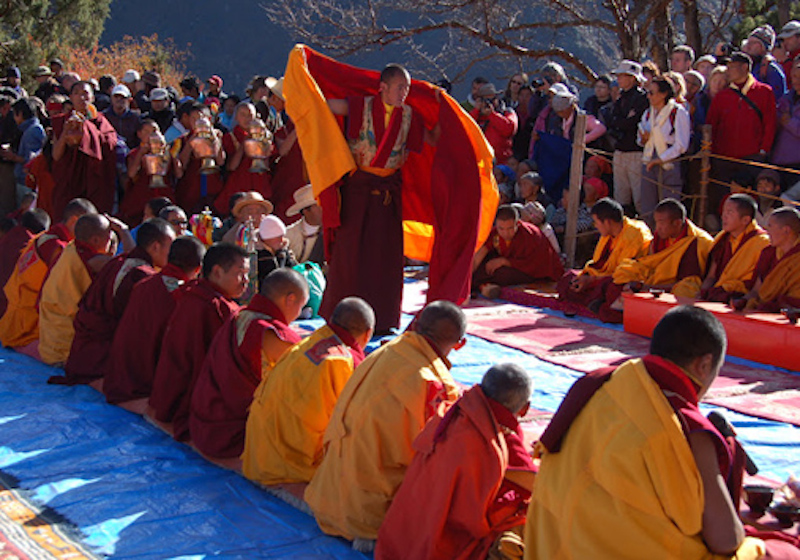
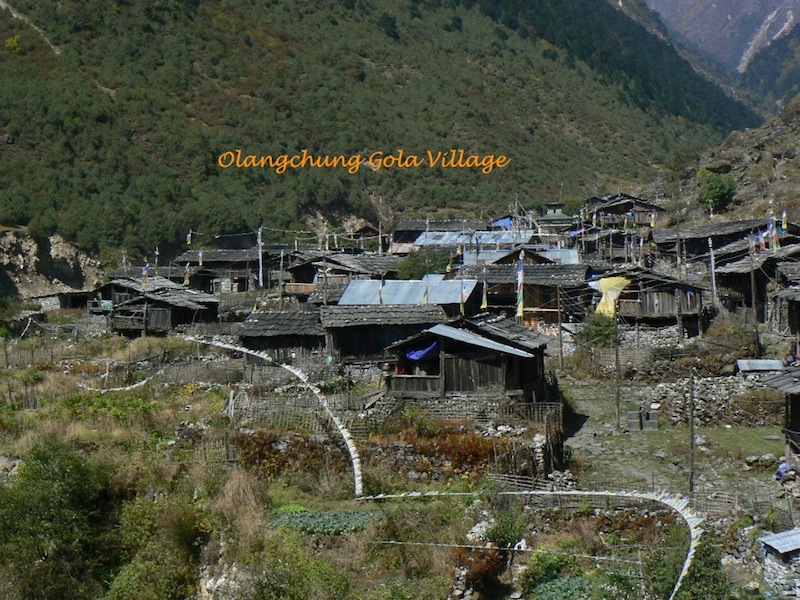
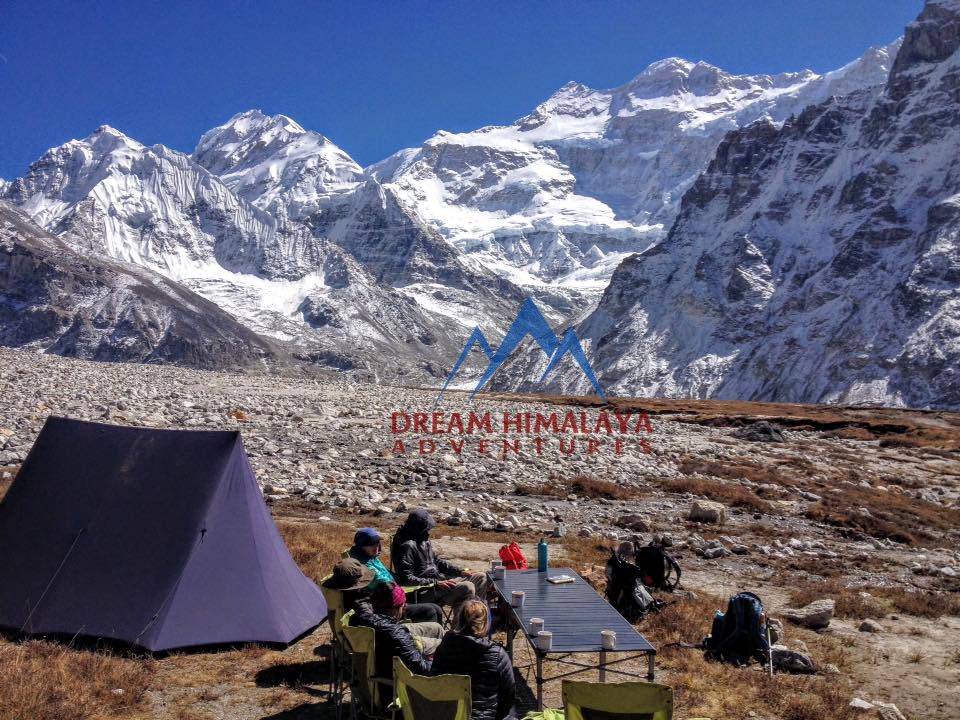
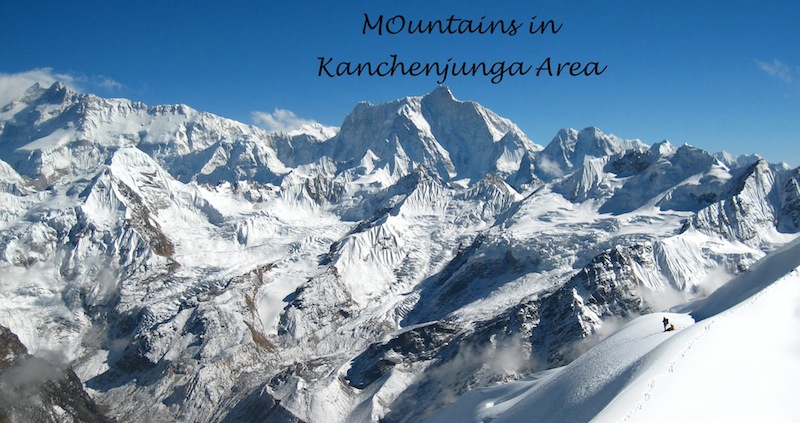
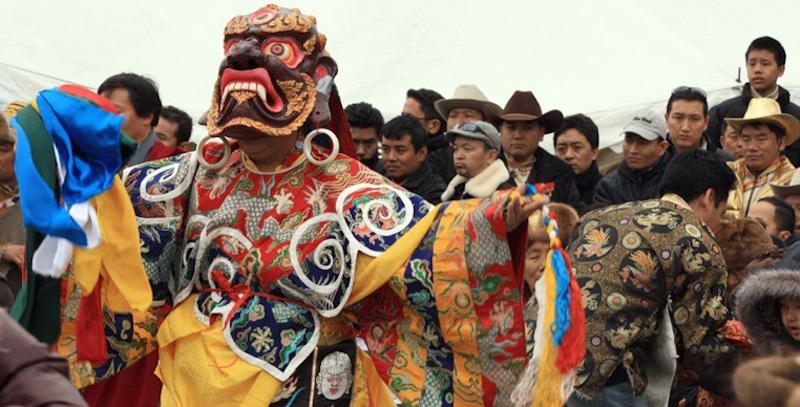
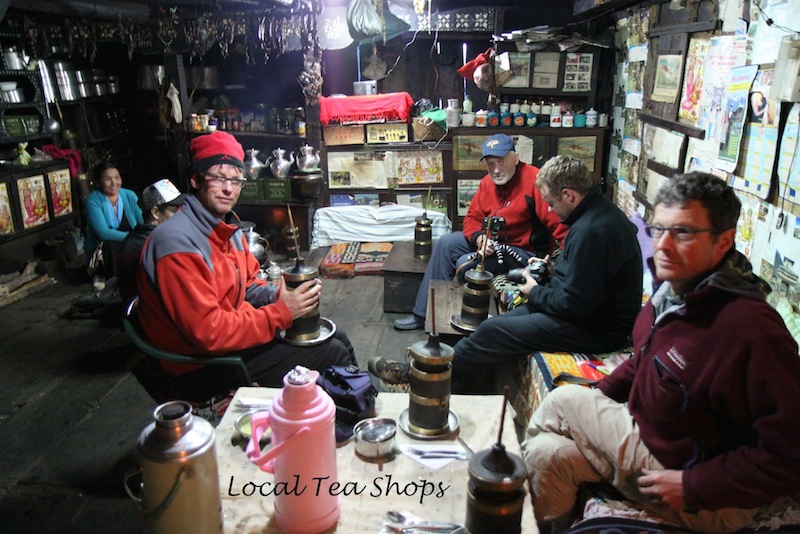
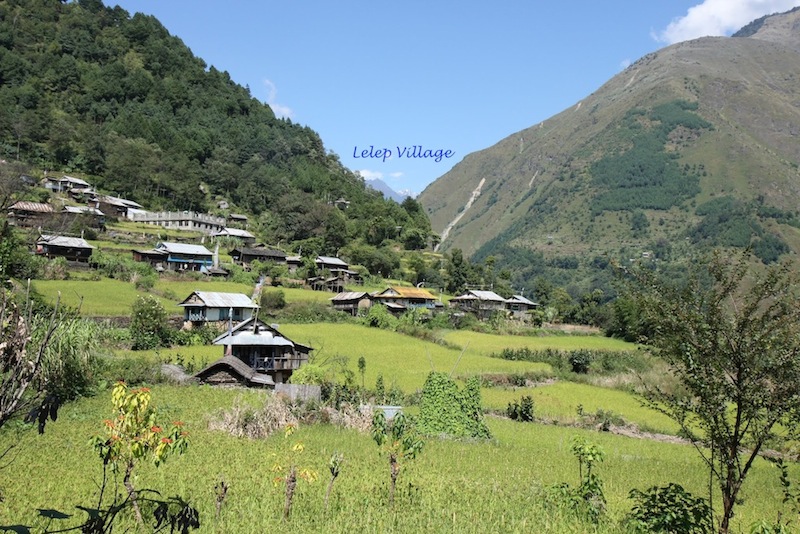
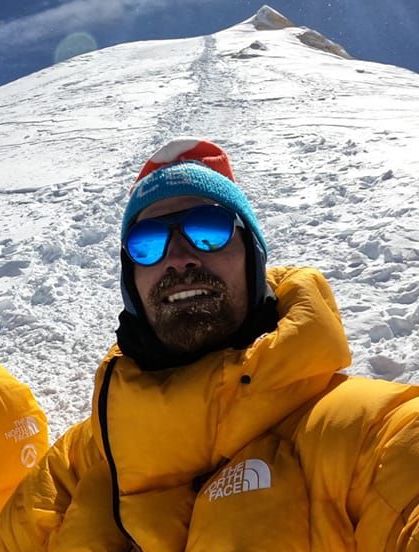
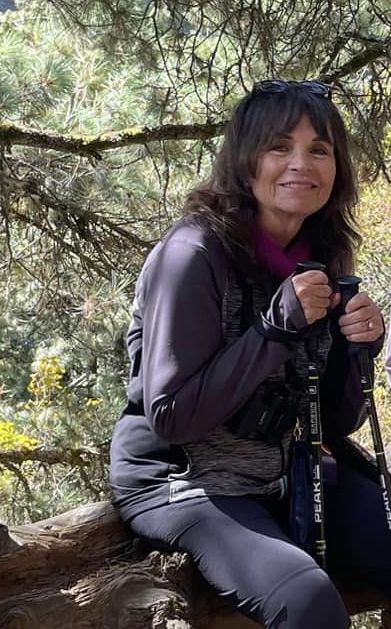
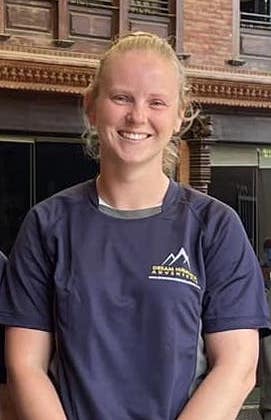
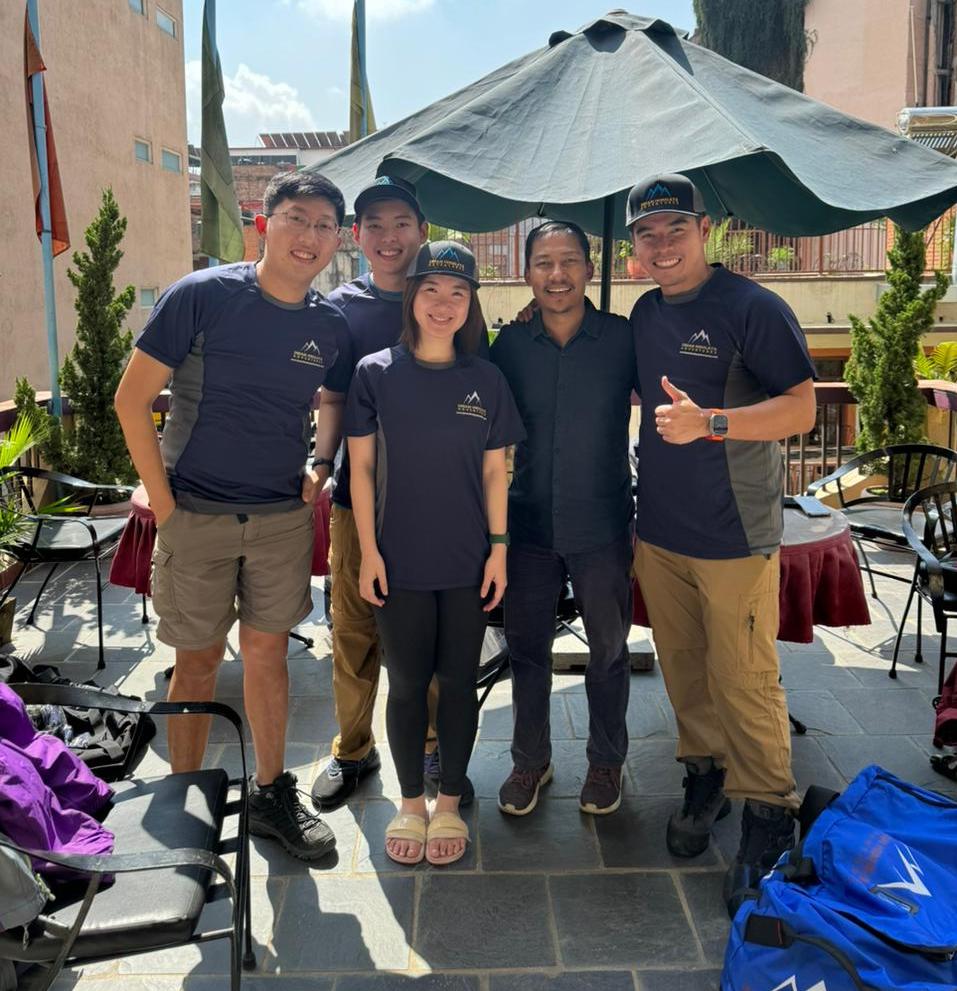
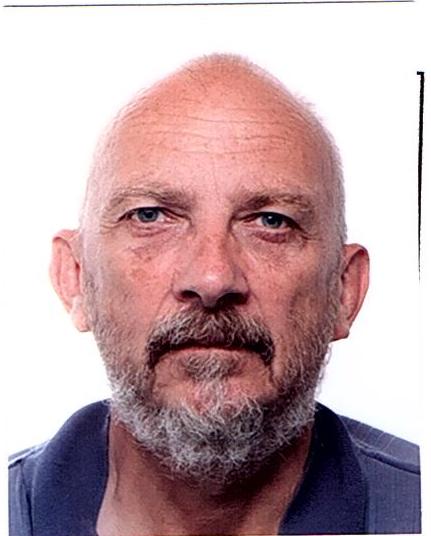
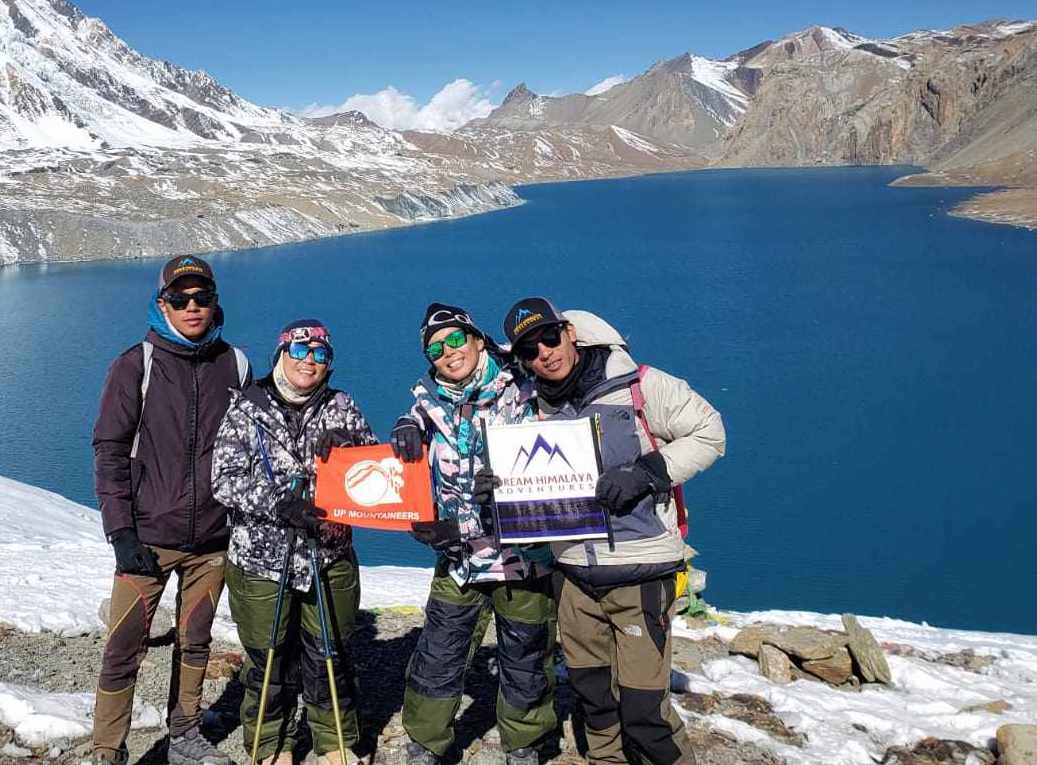
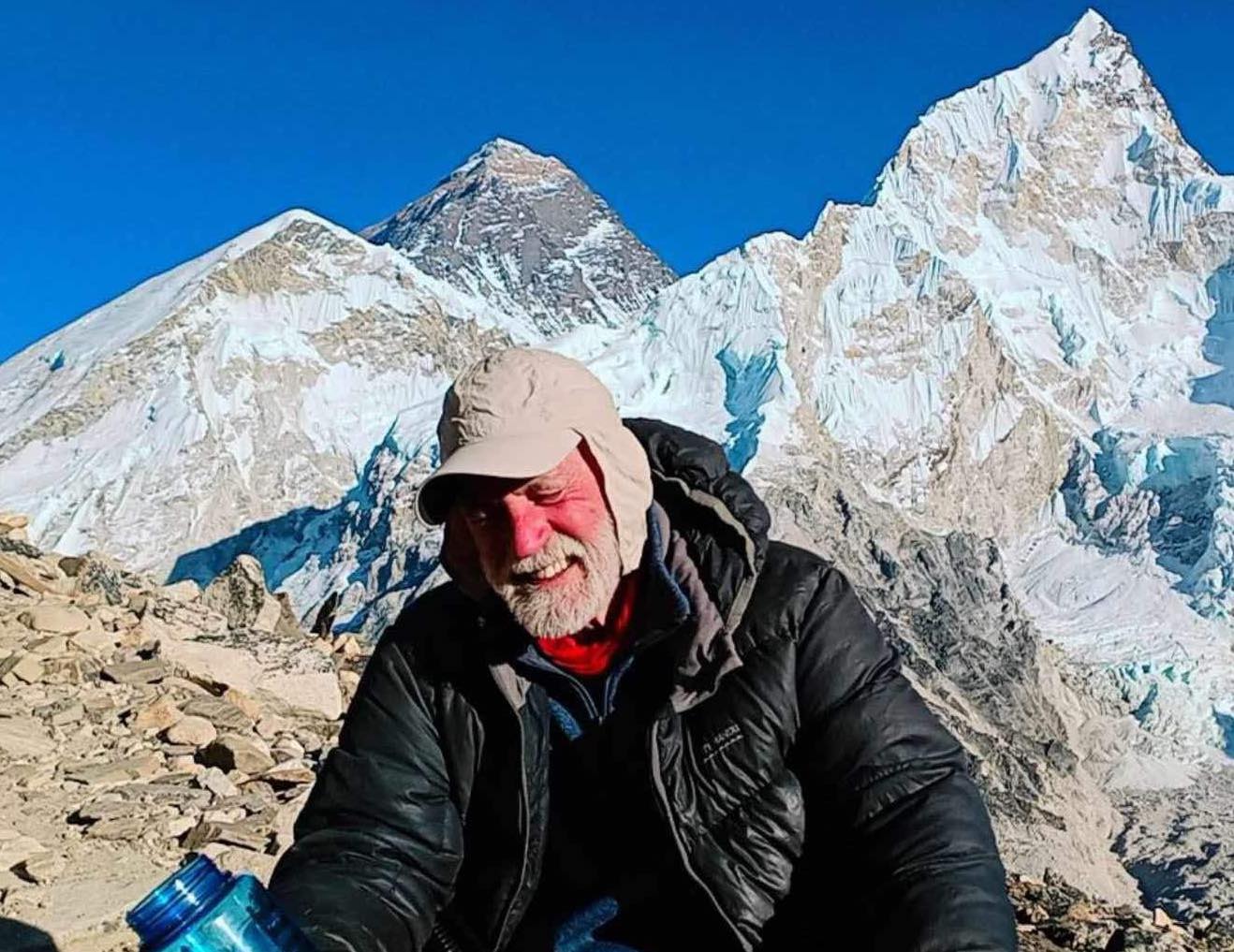

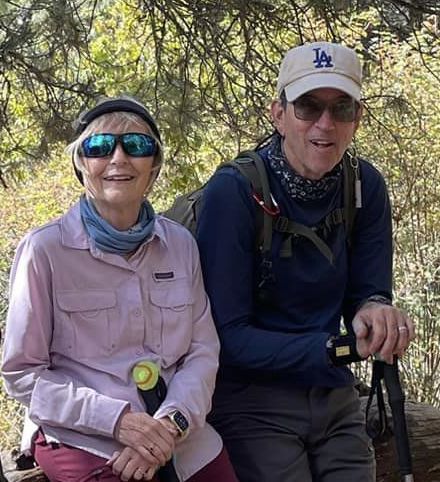
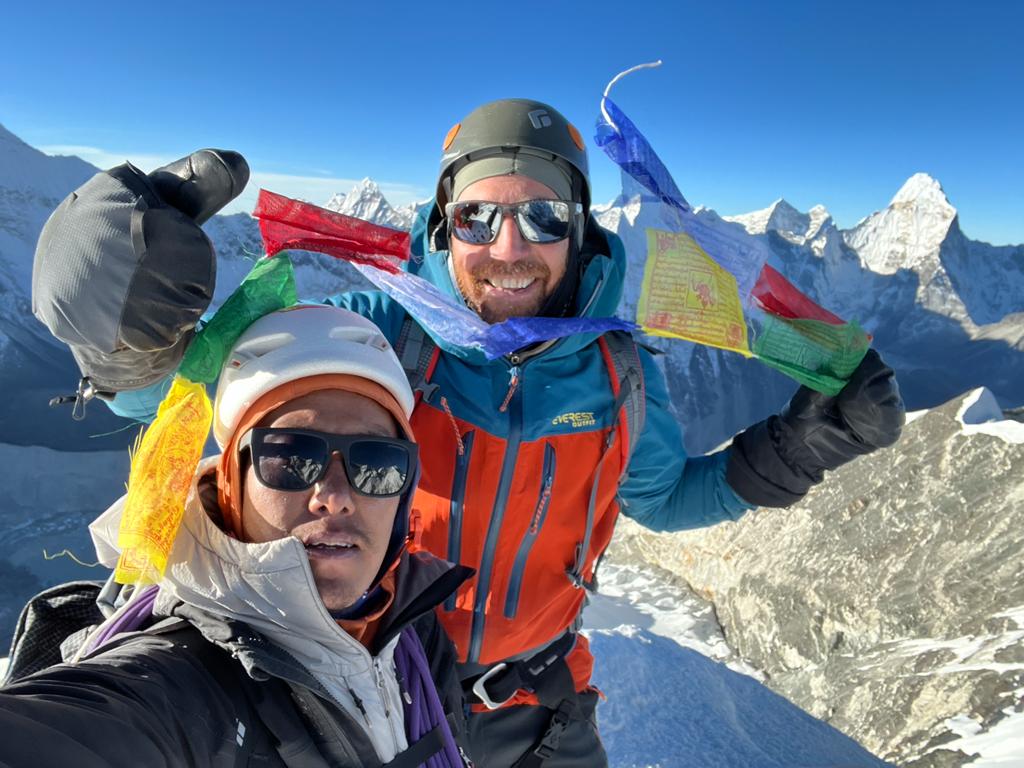
 Download Gear Check List
Download Gear Check List
